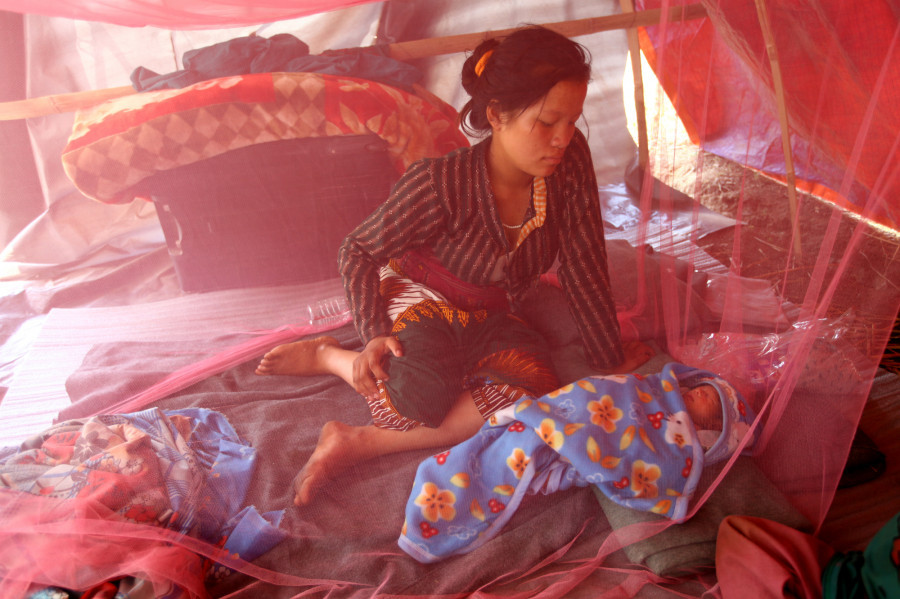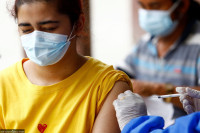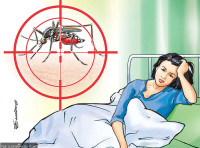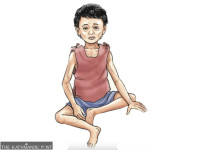Health
Use technology to curb deaths related to childbirth, experts say
Family Welfare Division starts dialogue to reduce country’s maternal, neonatal deaths.
Arjun Poudel
On Sunday, a 22-year-old woman from Jumla delivered a stillborn on the way to the Karnali Academy of Health Sciences. Doctors said that the woman was brought to the hospital in a critical condition as a result of excessive bleeding.
“We had to transfuse five pints of blood to keep her alive. We saved her but the baby did not survive,” Dr Sharmila Shrestha, associate professor at the academy told the Post over the phone.
According to the World Health Organization, there are nearly 2 million stillbirths every year—one in every 16 seconds. Three-fourths of the stillbirths occur in South Asia and Sub-Saharan Africa and 60 percent occur in rural families from these areas.
Stillbirths, neonatal and maternal deaths have always been a health concern in Nepal. The ongining Covid-19 pandemic, which increased home delivery and limited antenatal and postnatal visits, has made the matter worse.
“It was the second time the woman had delivered a stillbirth baby,” Shrestha added. “Such cases come to our hospital frequently. The trend of seeking help from health workers only after all efforts to deliver babies at home have failed is taking the lives of mothers and their babies.”
The WHO says that over 40 percent of stillbirths occurring during labour can be avoided with improved quality and respectful care during childbirth including routine monitoring and timely access to emergency obstetric care when required.
In Nepal, neonatal death rate stands at 21 in every 1,000 live births and that of maternal deaths at 239 in every 100,000 live births, according to the National Demographic Health Survey-2016. These ratios have not declined for a long time.
“To reduce the maternal and neonatal deaths we have started a policy dialogue with the health agencies under the provincial governments,” Dr Punya Poudel, chief of Safe Motherhood Programme at the Family Welfare Division under the Department of Health Services told the Post.
“We will review all the measures we have been taking to lessen maternal and neonatal deaths.”
Maternal and neonatal death rates and causes of deaths in each province will be reviewed in the discussion, added Poudel.
Maternal and child health experts say the existing government policy to promote institutional delivery has yielded the result it could give and the authorities should think beyond that to address the remaining problems.
“If women are not coming to health facilities for delivery, we should send health workers to the villages,” Dr Damaru Prasad Paneru, associate professor at Pokhara University, told the Post. “It is the only way to bring the existing maternal and neonatal deaths rates down.”
Of the total delivery, institutional delivery rate is only around 59 percent, according to the Ministry of Health and Population. With the start of the coronavirus pandemic,institutional delivery rate has declined.
Nepal has already missed the 2020 target of reducing maternal mortality rate to 125 per 100,000 live births from the current rate of 239 deaths per 100,000 live births.
In the wake of the coronavirus pandemic, several hospitals which used to provide maternity services were converted into Covid-19 treatment facilities. Some birthing centers and hospitals were shut down to contain the virus spread. Women were forced to give births at home as a result.
Poudel, chief of Safe Motherhood Programme, said the overall maternity services declined by more than 30 percent during the first few months of the lockdown, which has also increased the death rate of both mothers and newborn babies.
Paneru of Pokhara University, who is also a maternal and child health expert, said that use of technology such as telephone and internet could be another effective means to address the existing problems of maternal and neonatal safety.
“We can keep record of all pregnant women and newborn babies and follow up about their conditions by using the technology we have,” said Paneru, “Even if we cannot contact the women and their families, we can ask the female community health volunteers in their areas.”
Either patients can be brought to health facilities on time or health workers can be deployed to the villages on time for service, if the condition of women and children are known, according to him.
Nepal aims to reduce maternal mortality rate by 70 per 100,000 live births and 12neonatal deaths by 1,000 live births by 2030 to meet the Sustainable Development Goal target.




 13.12°C Kathmandu
13.12°C Kathmandu














